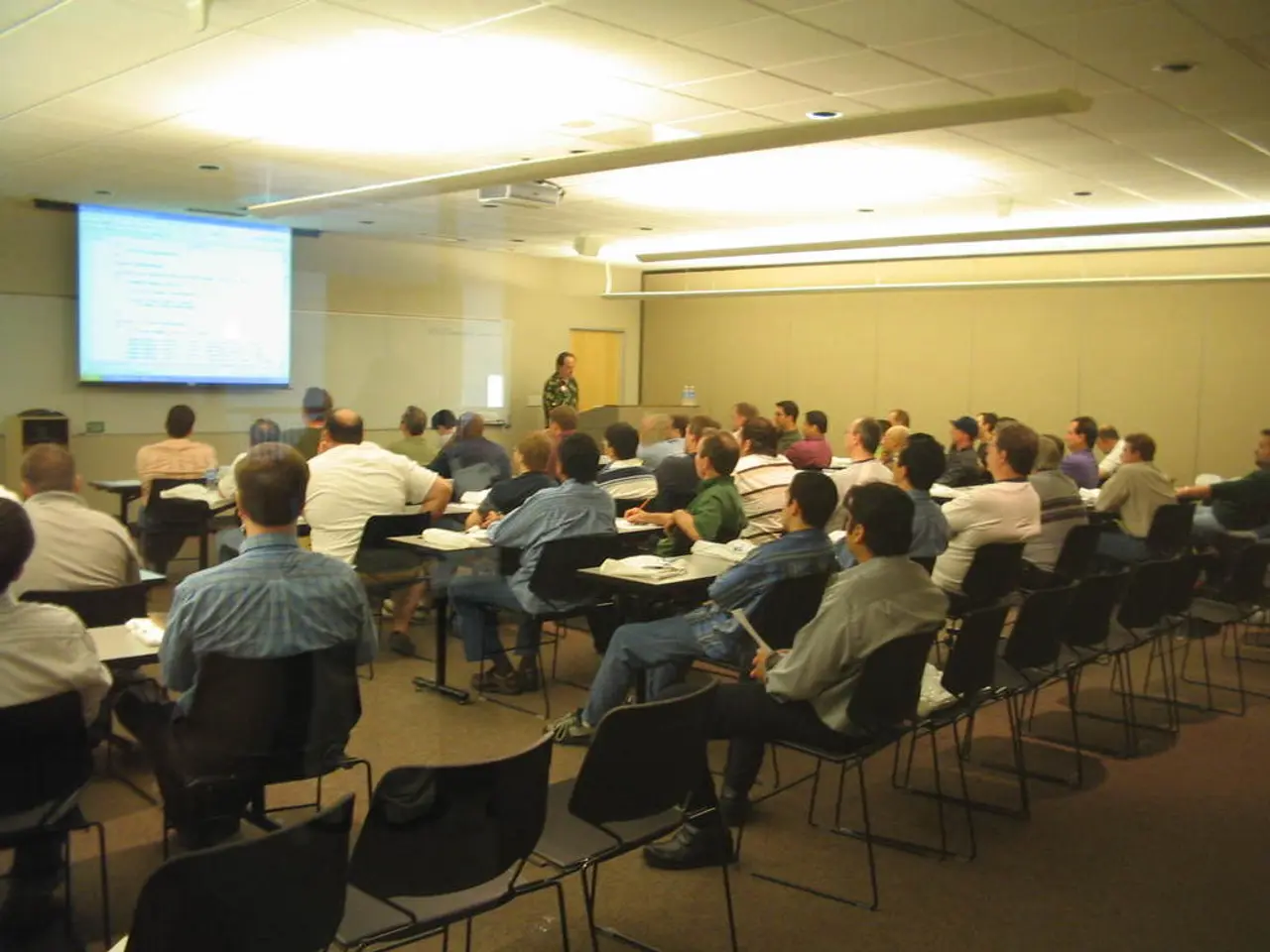Insights on Purchasing a Projector for Educational Use
In the realm of educational technology, projectors play a significant role in enhancing classroom learning. Here's a guide to help you choose the perfect projector for your school environment.
Projector Type and Light Source
For schools, laser or LED projectors are preferred due to their longer lifespan, lower maintenance, and consistent brightness compared to traditional lamps. Laser projectors, in particular, are bright and durable, making them ideal for classroom settings.
Brightness
High brightness is crucial to combat typical classroom light conditions. Projectors with at least 3,000 to 5,000 ANSI lumens ensure clear visibility even in well-lit rooms. For instance, the ViewSonic LS740HD offers 5,000 lumens and is recommended for education.
Resolution
A minimum of Full HD (1080p) resolution is advisable for clear and detailed presentations and educational videos. Higher resolutions (4K) are great but may not be cost-effective for typical school use.
Screen Quality
A quality screen significantly enhances image clarity and brightness. Choose screens with appropriate material and gain (1.1 to 1.5 gain) to reflect light well in bright rooms. PVC and fiberglass materials are durable choices. Also, consider screen size relative to classroom size and viewing distance, commonly 100-135 inches diagonal.
Connectivity
Multiple wired and wireless connectivity options improve flexibility. Look for HDMI, USB, Wi-Fi, and Bluetooth support so the projector can connect to laptops, tablets, and smartphones seamlessly.
Throw Distance and Type
Ultra-short throw (UST) projectors reduce shadows and glare by projecting from a short distance, improving usability in classrooms with limited space.
Price
Budget considerations are important. Models with good brightness, resolution, and connectivity can range from around $1,000 to $2,000 for education-grade projectors. Premium models with advanced features (4K, high brightness, advanced color accuracy) cost more and may be unnecessary for basic school needs.
Other Considerations
- Pricing: Check warranty and guarantee coverage for peace of mind.
- Laser projectors: Offer far more colors and better contrast and definition for an end result that is often superior to bulbs.
- A ceiling-mounted projector is out of the way above the heads of everyone and is remotely controlled.
- Sound: Using existing school speakers for audio can save money and provide better audio quality.
- Projector cost consideration: Going for a higher resolution projector, perhaps with touch interactivity, can help avoid the purchase of interactive whiteboards.
- Warranty and guarantee: Some models offer extended periods to provide peace of mind, suggesting they are built to last.
- Light source: LED and laser options last longer (up to 60,000 hours) and have lower maintenance and running costs.
- Freestanding projectors need to be placed on a table and are more portable.
- If you plan to watch videos on the projector, color and HDR are especially important aspects to consider.
- Many projectors offer HDR, which enhances contrast and creates a more immersive experience.
- There are variations in resolution, brightness, color, contrast, light type, and maintenance needs among projectors.
- Bulb lifespan: Traditional mercury-based bulbs offer about 5,000 hours before needing a replacement.
- LED and laser advantages: These options are more expensive up front but are safer, more environmentally friendly, and can be more affordable in the long term due to lower maintenance and running costs.
- Short throw projectors are ideal for smaller spaces and are super portable.
- The guide aims to help in choosing the right projector for school.
In summary, for school use prioritize a laser or LED projector with at least 3,000 lumens, Full HD resolution, versatile connectivity, and a quality high-gain screen suited to room size, balancing cost and features for the educational environment. Ultra-short throw projectors are advantageous in classrooms with space constraints. This approach ensures bright, clear images under classroom lighting conditions with minimal maintenance and flexible device compatibility. For more detailed information, consider our "best projectors for schools" guide to find the ideal model.
- In the educational technology sphere, a teacher might favor using an interactive laptop for learning in a school setting, as it can connect seamlessly to a projector, enhancing the potential for comprehensive presentations.
- By utilizing technology in the realm of education-and-self-development, teachers can make learning more engaging and contemporary, enriching their lifestyle with cutting-edge tools.
- For optimal classroom efficiency and seamless lecture delivery, a teacher might benefit from adopting an advanced projector with brightness, resolution, and connectivity that caters to the school's atmosphere, ensuring a cost-effective and versatile solution for all learning scenarios.
- Enhancing the overall school environment with technology, a teacher could opt for an education-grade projector equipped with touch interactivity, eliminating the need for additional expenses such as interactive whiteboards, thus fostering a more streamlined and future-oriented learning environment.




